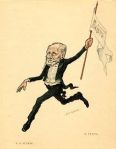About me
My name is Amy Growcott, and I am a ballet historian and a writer.
I was born in County Antrim, Northern Ireland, and my ballet journey began when I was 14 after I was introduced to Tchaikovsky’s Swan Lake. Since then, ballet has been a huge part of my life. I then went onto study ballet and dance for my GCSEs and A Levels at school for four years until I was 18 and those four years of study broadened my horizons as another side of me began to develop.
My interest in ballet history grew from curiosity and an inquisitive mind about the ballets, especially the classics, and the different versions danced by different companies. As I learned more about them, I was interested to know which version was the original or closet to the original and eventually, it led me to the name Marius Petipa. This sparked a further interest in wanting to know what is Petipa and as time passed on, it developed into my passion. The more I learned about Petipa, ballet and ballet history, the more I wanted to learn.
From 2014 to 2015, I studied MA Ballet Studies at the University of Roehampton in London under Dr Geraldine Morris. The course made a huge difference: it taught me so many important lessons, my history knowledge deepened, I was introduced to the works of some very important people from the dance research field and I learned to look at and analyse ballet in a different way. I learned how to look at it from an academic perspective rather than a fan’s perspective, especially when it comes to making fair and important judgements and decisions, especially regarding history.
It was in the last few months of my studies that I came up with the idea of creating a new project dedicated to Petipa and in the summer of 2016, after I graduated, I launched The Marius Petipa Society. I started the project because I became aware of how misunderstood Petipa has been for so long, despite the importance of his role in the art form, so I wanted to change that. I wanted to give him a platform that would teach people about him, his ballets, why he’s such an important figure and why he’s still relevant today. I was inspired by the historical productions by Sergei Vikharev and Alexei Ratmansky. As I saw how they strove to restore Petipa’s choreography, I thought I could help cover the academic side, so I created the Petipa Society so that balletomanes, critics, dancers, etc would have a digital platform that answered any questions they had about they saw in the historical productions.
My journey through ballet has been an amazing experience of learning more about ballet itself, it has given me incredible opportunities of travelling and attending different events, and I have had the pleasure of meeting some really amazing people. It’s something I’m really proud of and very grateful for.
“Ballet is a visualisation of the essence of the human soul, an otherworldly beauty and an indescribable joy. Ballet is art and it shines its an eternal light that not even the darkest of shadows can extinguish.”
— Amy Growcott
Ballet history is vital for the art form and it’s much more important than many people may think. A lot of people think that because ballet has evolved, we should ignore the past and “improve” everything, but that is one of the biggest misconceptions spreading through the art that too many people carry. The past has a lot to teach us and in the case of ballet, we learn so much that applies not just to the past, but to the present. I have learned about so many important values and aesthetics of ballet that give it its identity as a theatrical art form of otherworldly, poetic beauty in favour of hardcore technique, endless tricks that have no real purpose and even politics. I’m very inspired by many people, especially Alexei Ratmansky and Doug Fullington, who have worked hard to restore Petipa’s choreography and teach us all what his ballets are supposed to be look, what he intended for them, and what ballet itself should look like. I’m also very inspired by the likes of Lynn Garafola, Nadine Meisner, Marian Smith and Ivor Guest, whose books I am a big fan of, their research has taught me so much, and I would love for as many people as possible to know the knowledge that those books contain.
As a historian, it’s my aim to be part of the cause for ballet and ballet history, to teach everyone the history of this art and to restore Petipa’s legacy. My journey, so far, like every journey, has had its ups and downs, but it’s been incredible and I know there’s still more to come.



